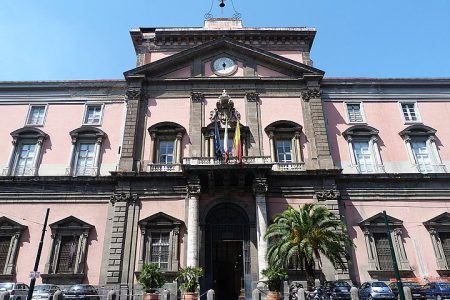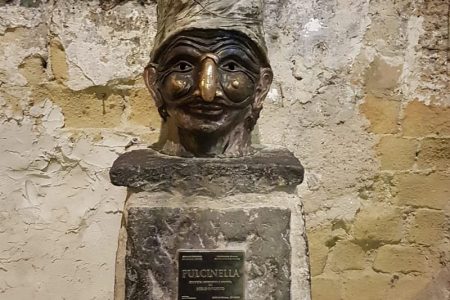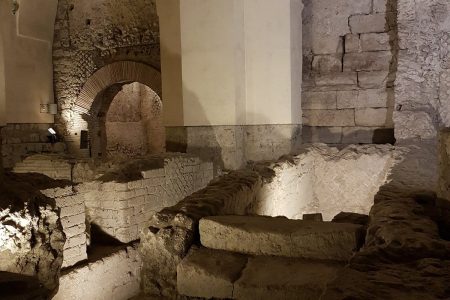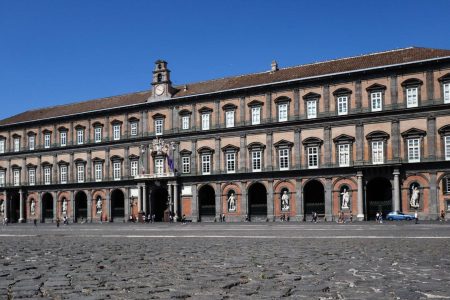Table of Contents
During the long years of the Middle Ages, Naples was conquered and ruled by the royal lineage of the Angevins. During this period the Neapolitan city took on a character all its own; the Naples that laid the foundation for the wonderful complexity and uniqueness that distinguishes it today was born.
The city would fit as secondary within the Kingdom of the Two Sicilies which had its capital in Palermo. However, with the coming of Charles I of Anjou the capital became Naples itself because it was chosen as the royal seat. During this period Boccaccio, Petrarch and Giotto made their contributions to the city's art and culture.
Charles I, the first Angevin king in Naples
Son of the kings of France Louis VIII and Bianca of Castile, Charles I was made count of Anjou and Maine, two ancient French provinces, by his brother Louis IX king of France. He entered Naples supported by the then French pope Clement IV. At the head of his Guelph troops, he beat first the Ghibelline king of Sicily, Manfred at the Battle of Benevento in 1266 and two years later also his son Corradino, who was beheaded by the king in Naples' Piazza Mercato. He thus became king of the Kingdom of the Two Sicilies, establishing the beginning of the French monarchical Angevin dynasty. Having lost the battle against the Sicilian people during the uprisings of the Vespers in 1282, he ruled as King of Naples.
Here he erected a grand castle originally called the Castelnuovo to emphasize the grandeur of the structure and the royal family that would have lived there. Today known to most as Angevin Male, the castle stands not surprisingly at a strategic vantage point of enemies coming from the sea.
Charles I, however, never resided there because for most of his monarchy he was busy countering the famous uprisings that rose up in the Sicilian part of his vast kingdom. It was instead with the rise to power of his son Charles II of Anjou that the Maschio Angioino became the main royal residence in Naples.
You might be interested
Guided tour of the Great Cone of Vesuvius
per person Book
Guided tour of the National Archaeological Museum in Naples
per person Book
Visit Naples in half a day: guided tour from Piazza Dante to Piazza del Gesù
per person Book
Admission ticket to the Neapolis Sotterrata and the Basilica of San Lorenzo Maggiore
per person Book
Private guided tour of the Royal Palace of Naples
per person Book
Charles II of Anjou and the Angevin heirs
Successor and son of the First Angevin King, Charles II was named the lame because of his unfortunate condition at birth. During his reign, pugs were minted in the Mint of Naples. Such gold or silver coins bore the royal coat of arms of the Angevins, which consisted of a blue carpet full of golden lilies symbolizing the numerous royals in the lineage. However at the head of the shield, a red rake was meant to distinguish the main branch of the family, which reigned in France.
Charles II of Anjou married Joan of Hungary with whom he had as many as fourteen children by whom the power of the French Angevin dynasty spread from the lands of Poland to those of Albania, Hungary, the Mediterranean and Greece.
To the firstborn, Charles Martel, was entitled to her mother's throne of Hungary. The second child was a girl, Margaret, was given in marriage to Charles of Valois, bringing as dowry the counties of Anjou and Maine. The third son, Ludovico, instead renounced the throne to join the Franciscan order, later becoming a bishop and eventually a saint.
In his place, his brother became king of Naples. Robert of Anjou, considered a cultured and a patron of the arts was called the Wise. During his reign Naples became a destination for great intellectuals becoming more enriched not only with history and prestige but also with admirable monuments such as the Church of St. Clare with its charming cloister that were built during the very first years of Robert's regency.
The whole family of King Charles II is depicted in the Sepulchral Monument dedicated to Queen Joan of Hungary kept in another famous monumental church in Naples: the grandiose Church of Donnaregina. The work was by the famous Italian sculptor Tino di Camaino who executed it around 1326. The monument sees the queen accompanied in her eternal sleep by angels and her children placed just below her mother. These are each distinguished by aristocratic symbols. In the center St. Lodovico, who renounces his crown and will become a bishop, is distinguished by his episcopal headdress.
Prominent on the facade of the church is the coat of arms of Queen Joan of Hungary, whose figure is so closely connected to the image of the church, that it has given rise to a nice misunderstanding since it suggests that the name given to the church is not derived from the name of the Virgin Mary, but precisely that of the Queen of Hungary.
The monuments of the Angevins do not end here, including. Castel Sant'Elmo, the Basilica of San Domenico Maggiore, the Cathedral and the Basilica of San Lorenzo Maggiore were built by this important dynasty.






0 Comments